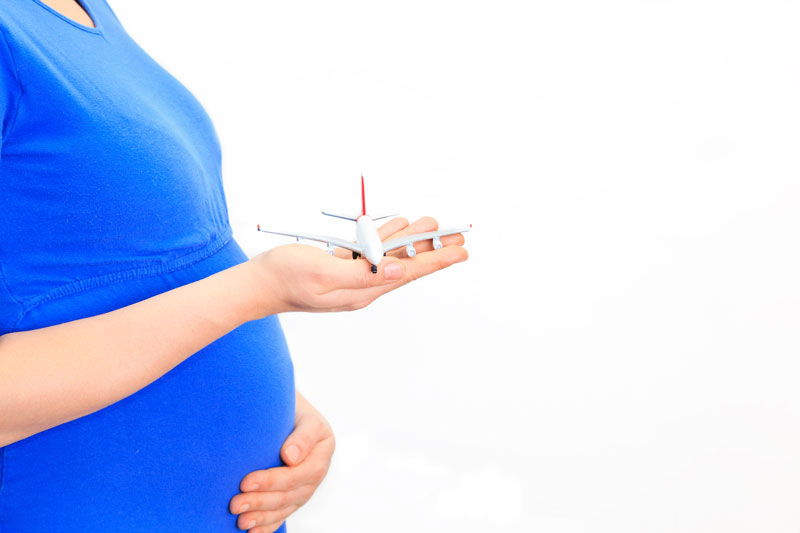If you are pregnant and planning a trip, it is useful to know that your commute is subject to certain restrictions, related to transportation, pregnancy stage and your health.
General instructions
Many of the precautions a pregnant woman should take before travelling are basic guidelines for anyone travelling; for example, the use of a seat belt on all means of transport applies to all passengers – and pregnant women are no exception. The same is true of dietary precautions: we do not drink tap water unless we are sure of its quality, we prefer well-cooked / well-baked food and we avoid foods or beverages that cause gases before a flight.
When can I travel?
There is no “prohibition” at any stage of pregnancy. However, statistically, the safest period is the second quarter, as most emergencies occur during the first or last quarter. In addition, as we approach childbirth, the extra weight can make long journeys more tiring. If you have any health problems, such as a thrombosis, consult your gynecologist for appropriate guidance.
Travelling by car
Pregnancy does not pose a problem with using the seat belt. On the contrary, it is yet another reason for its use. All you have to pay attention to is the horizontal strap running low on your waist, applying to the bones of the pelvis, not above your belly.
It is also advisable that the journey does not exceed 5 hours and frequent stops should be made to disembark and unwind.
Travelling by plane
Some companies place restrictions on women who are in their last weeks of pregnancy and you may need a medical certificate. In general, travelling by plane is not contraindicated during pregnancy, unless it is frequent, so the radiation to which the body and the fetus are exposed to begins to become appreciable.
Ask for a seat in the corridor or – even better – in the rows just behind the emergency exits. Try to get up, walk and do simple exercises that stimulate blood circulation to the limbs. Avoid alcohol, make sure you drink plenty of water and do not loosen your belt only if you want to get up!
Travelling by boat
It may be the “friendliest” means of travel, as it allows you to not stay locked in the same position. The precautions here are mainly concerned with safety when moving onboard, especially on the outer deck stairs.
If you are susceptible to nausea, ask your doctor to tell you what the best way is to treat it and, if possible, plan your trip considering weather forecasts.
Finally, pay close attention to your hygiene, perhaps using alcohol wipes, to disinfect your hands after contact with any surface that may be contaminated.






